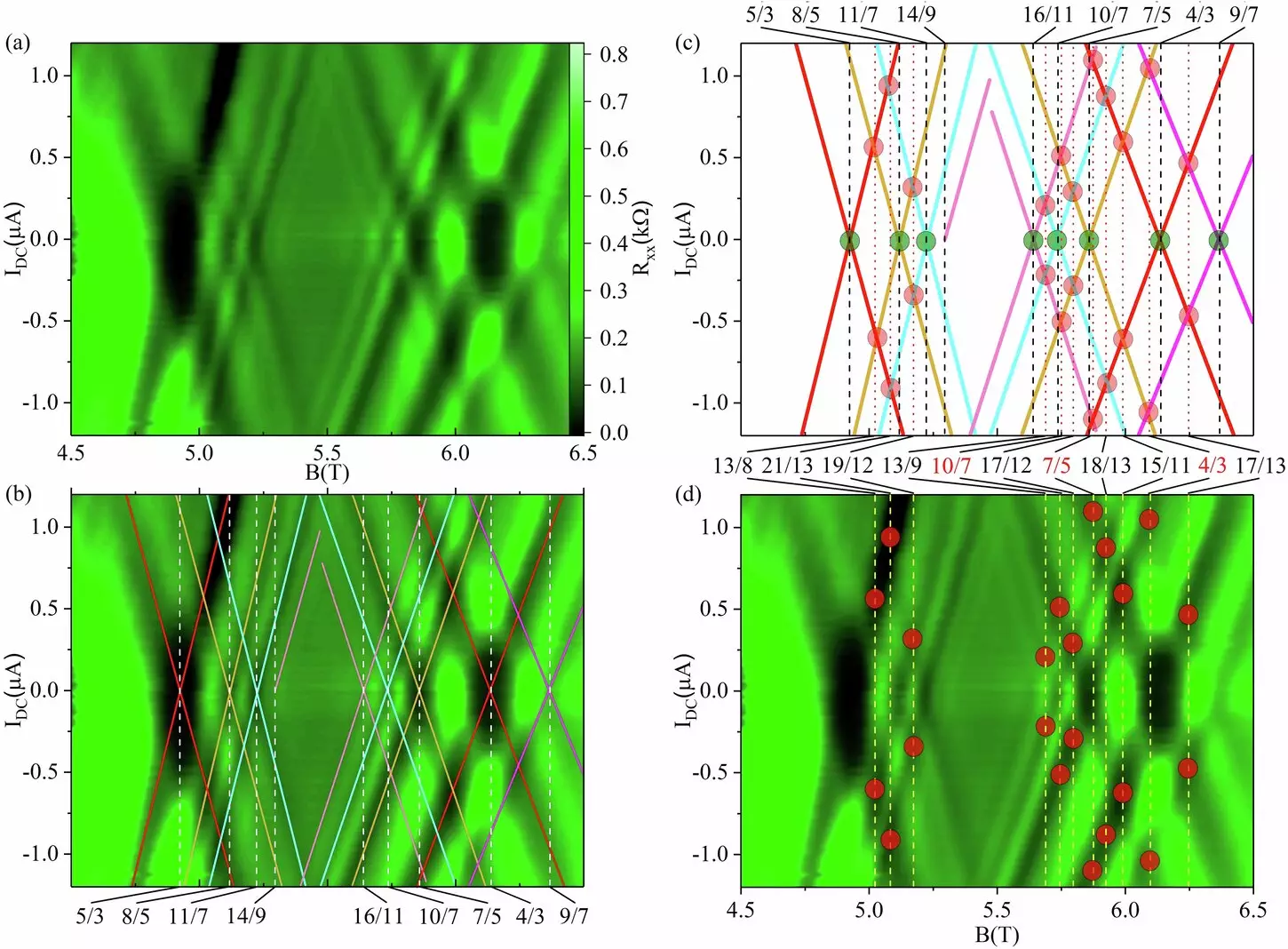The universe, as we perceive it, is imbued with multifaceted complexities, governed by a three-dimensional reality. However, researchers are now delving into a compelling alternative: a two-dimensional realm often called “flatland.” Within this unique space, the rules that dictate particle behavior, particularly electrons, take on an extraordinary dimension, unveiling previously hidden properties that defy conventional understanding. A team from Georgia State University, led by Professor Ramesh G. Mani and recent Ph.D. graduates U. Kushan Wijewardena, is at the forefront of this exploration, embarking on a significant investigation into the fractional quantum Hall effects (FQHE). Their groundbreaking findings, detailed in the journal *Communications Physics*, promise not only to expand our understanding of these exotic states but also to advance the broader field of condensed matter physics.
The study of quantum Hall effects is a critical pillar in condensed matter physics, having propelled numerous advancements since Klaus von Klitzing first identified the conventional quantum Hall effect in 1980, which earned him a Nobel Prize in 1985. This phenomenon demonstrated that through simple electrical measurements, one could derive highly accurate values for fundamental physical constants. The subsequent discovery of the fractional quantum Hall effect in 1998, which revealed the possibility of fractional charges among particles in two-dimensional systems, further deepened our comprehension of quantum behavior.
The introduction of graphene—a two-dimensional material characterized by massless electrons—added another layer to this complex puzzle, earning Nobel recognition in 2010 for its revolutionary implications in electronics and materials science. The continuous exploration of new phases of matter, prompted by the quantum Hall effect, ultimately led to another Nobel Prize in 2016, underscoring the dynamic nature of research in this domain. These cumulative discoveries have paved the way for modern electronics, influencing a spectrum of technologies from smartphones to solar panels, positioning condensed matter physics as a cornerstone of innovation in our high-tech society.
At the heart of the recent investigation lies an experimental design that operates at conditions nearing absolute zero and in a magnetic field far stronger than that of Earth—nearly 100,000 times more intense. The researchers employed a current bias on high-mobility semiconductor devices crafted from a combination of gallium arsenide and aluminum gallium arsenide. This methodological framework aimed to realize electrons behaving within their two-dimensional flatland environment. The results were astoundingly unexpected; the team documented splitting of all FQHE states, which led to intriguing crossings among these split branches. This pivotal moment permitted the examination of new non-equilibrium states, revealing complex behaviors that had previously gone unnoticed.
Professor Mani likened traditional FQHE studies to exploring only the ground floor of a building. Their work, however, aspires to ascend the uncharted upper floors, unveiling layers of understanding that have long eluded researchers. The innovative application of relatively simple techniques within this demanding context has allowed the team to discover new excited states, reshaping the landscape of this field.
The implications of the findings extend far beyond mere curiosity. By challenging existing theories and proposing a hybrid origin for the observed non-equilibrium FQHEs, the research sets the stage for novel explorations in both theoretical and applied physics. This investigation not only provides a rich ground for future academic inquiry but also unveils pathways that could lead to substantial advancements in quantum computing and materials science.
Both Mani and Wijewardena share a palpable enthusiasm for the implications of their work. With years of dedication aimed at unraveling the complexities of FQHE states, their excitement at achieving findings that bridge theoretical concepts with experimental results reflects the continuous evolution of the field. They acknowledge that their current results act as a tantalizing precursor to future research endeavors that could potentially redefine our technological landscape through improved energy efficiency and superior processing capabilities.
Moving forward, the team plans to broaden their inquiries into even more extreme environments while seeking innovative ways to measure intricate flatland parameters. Through each experiment, they aim to disentangle the mysterious behaviors at play, fully aware of the possibility that each answer may open new avenues of curiosity.
The work of Mani, Wijewardena, and their colleagues is not just a step forward in academic inquiry but also a cornerstone in training future scientists. As they nurture the next generation, their findings serve as a beacon, steering the course toward potentially revolutionary technologies that could transform everything from data processing techniques to broader energy applications.
As researchers unearth the nuanced dynamics of fractional quantum Hall effects, they pave the way for unprecedented technological advancements. The boundaries of condensed matter physics are expanding, and with each discovery, humanity inches closer to understanding the incredible intricacies of its own universe.


Leave a Reply